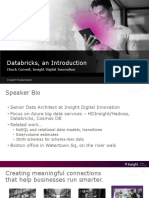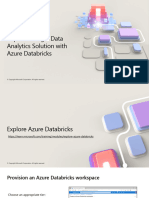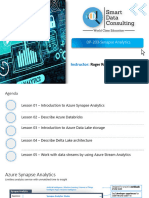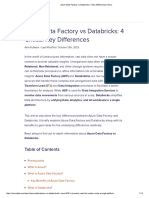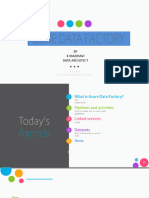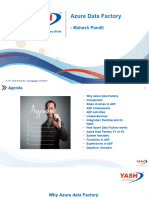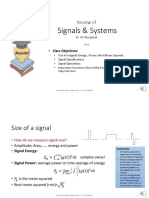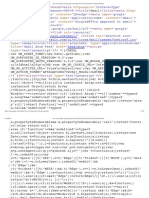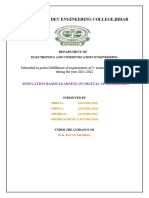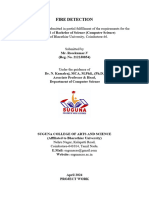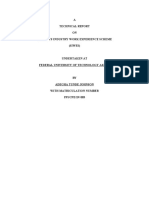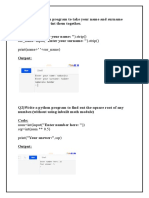0% found this document useful (0 votes)
56 views22 pagesDatabricks 2
This document summarizes a presentation about Azure Databricks given by Eugene Polonichko. The presentation covers:
1. What is Azure Databricks - it is an Apache Spark-based analytics platform optimized for Microsoft Azure that provides one-click setup and an interactive workspace for collaboration.
2. The components of Azure Databricks including clusters, workspaces, notebooks, visualizations, jobs, alerts, and the Databricks file system.
3. How Azure Databricks can benefit data engineers with scenarios and pricing information.
Uploaded by
Madhavi KareddyCopyright
© © All Rights Reserved
We take content rights seriously. If you suspect this is your content, claim it here.
Available Formats
Download as PDF, TXT or read online on Scribd
0% found this document useful (0 votes)
56 views22 pagesDatabricks 2
This document summarizes a presentation about Azure Databricks given by Eugene Polonichko. The presentation covers:
1. What is Azure Databricks - it is an Apache Spark-based analytics platform optimized for Microsoft Azure that provides one-click setup and an interactive workspace for collaboration.
2. The components of Azure Databricks including clusters, workspaces, notebooks, visualizations, jobs, alerts, and the Databricks file system.
3. How Azure Databricks can benefit data engineers with scenarios and pricing information.
Uploaded by
Madhavi KareddyCopyright
© © All Rights Reserved
We take content rights seriously. If you suspect this is your content, claim it here.
Available Formats
Download as PDF, TXT or read online on Scribd
/ 22












